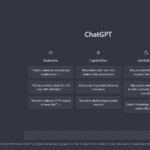Customer journey touchpoints are customer interactions with your business throughout their experience. These touchpoints provide valuable information that can be used to understand customer behavior better and create more tailored experiences. Examples of touchpoints could include website visits, social media interactions, in-store purchases, contact center conversations, emails, or phone calls. By understanding and optimizing customer touchpoints, businesses can create a more personalized journey that better meets the needs of their customers. This leads to increased customer satisfaction, loyalty, and brand recognition. In addition, by understanding how each touchpoint contributes to the customer’s overall experience, businesses can use this information to optimize their processes and create a seamless customer journey.
Customer journey mapping is a powerful tool for understanding customer experience and can be used to identify areas of improvement. It is essential to any successful business, allowing companies to gain valuable insights into their customers’ motivations and behaviors.
Creating a customer journey map begins by gathering data from the customer’s interactions with the company, such as website visits, purchase history, customer service interactions, and feedback. This data is then analyzed to identify critical touchpoints in the customer’s journey, which helps to represent the customer’s experience visually.
Once this visual representation has been created, it can be used to highlight areas of improvement. For example, common customer pain points can be identified and addressed to improve their overall experience. Additionally, companies can use the map to identify opportunities for further customer engagement, such as special offers or loyalty programs.
Customer journey mapping ultimately helps businesses make informed decisions about how to meet their customers’ needs best and provide a better overall experience. By understanding their customers’ motivations and behaviors, companies can create more personalized experiences that increase satisfaction and loyalty. With the right strategies in place, customer journey mapping can help businesses gain valuable insights into how their customers think and act to craft an effective method for success.
Creating a customer journey map requires thoroughly understanding the customer’s experience. A successful map should clearly show all stages of the customer’s journey and provide insights into how they interact with the company. It should also highlight areas where additional work can be done to improve the customer’s experience. With the right approach, companies can use customer journey mapping to gain valuable insights that will help them better understand their customers and take proactive steps to improve their service.
Through this process, businesses can create an effective strategy for success by gaining insight into their customers’ needs and desires. By creating an optimized customer journey map, companies can ensure that every stage of the customer’s experience is optimized for success. With the right strategies in place, businesses can ensure that they meet their customers’ needs and help them reach their goals.
Customer journey mapping is a powerful tool for understanding customer experience and can be used to identify areas of improvement. By taking a proactive approach to analyzing customer data and creating a practical map, companies can gain valuable insights into their customers’ motivations and behaviors to craft an effective strategy for success. With the right processes in place, customer journey mapping can help businesses create an optimized experience that leads to increased customer satisfaction and loyalty.
Customer journey management manages and optimizes customer experiences throughout their entire journey with your organization. It involves understanding the different touchpoints that customers have with your business and how they interact with each one. Through this data, organizations can identify gaps and opportunities in the customer experience to better serve them. Customer journey management typically involves mapping out all touchpoints a customer has with your brand across channels such as online, offline, social media, etc., and then using this data to create an optimized journey for each person. This includes providing personalized content at every step along the way and offering incentives or discounts tailored to their interests. By doing so, companies can ensure that customers feel valued and appreciated throughout their relationships, increasing customer loyalty and satisfaction. In addition, by effectively managing the customer journey, companies can maximize their ROI by delivering more sales and higher customer retention rates.
Additionally, customer journey management helps businesses identify areas of improvement in their product or service offerings. Through data analysis, organizations can uncover what products are most popular with customers and then use this information to make informed decisions on how to serve them better. Furthermore, they can monitor customer feedback throughout the journey to ensure that they provide a satisfactory experience every step of the way. This allows organizations to adjust as needed and ensure that customers interact positively with their brand. Ultimately, effective customer journey management leads to greater brand loyalty and improved ROI.
For companies to be effective in customer journey management, they need to clearly understand who their customers are and what they want from experience. That’s why companies create customer personas — detailed profiles representing different segments of their target audience. Customer personas can provide valuable insight into how customers interact with a business and give companies a better understanding of each segment’s needs and preferences. With this knowledge, companies can craft more personalized customer experiences, resulting in higher satisfaction rates, increased loyalty, and greater brand recognition.
Customer persona creation can be done in a few steps:
1) Gather data on your customers
2) Analyze the data and identify customer segments
3) Create detailed profiles for each segment
4) Use the personas to customize your customer journey management strategy.
With the right approach, customer persona creation can help companies better understand their target audience and create a more compelling customer journey. This can lead the current customer base or any potential target audiences you may have; to improve customer satisfaction and higher conversion rates. A well-defined customer journey management strategy is the key to success and can give businesses an edge over their competition.











